#bwv 538
Explore tagged Tumblr posts
Text
youtube
3 notes
·
View notes
Photo
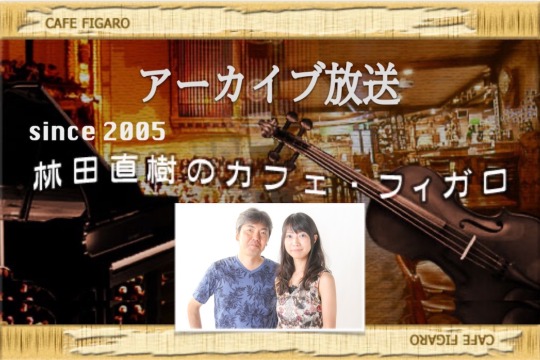
『林田直樹のカフェ・フィガロ アーカイブ放送』 2023/04/16 18時配信
ゲスト:オルガニスト 石丸由佳さん(15年8月放送)
今回は、オルガニストの石丸由佳さんのアーカイブ放送をお送りします。 2023年6月に開催されるリサイタル情報も掲載中♪
<再生はこちら▶️>
※スマホ/タブレットはアプリからご視聴ください。 過去の放送は、Back numberで🎧
今回は、19世紀ドイツ・ロマン派のオルガン音楽をテーマにバッハ、メンデルスゾーン、ラインベルガーの作品を集めた1stアルバム『オルガン・リサイタル~バッハ、リスト、メンデルスゾーン、ブラームス、ラインベルガー』についてお話をお聞きします。北ドイツにある教会でレコーディングされた当時の様子や収録楽曲をご紹介します。どうぞ、お楽しみに♪
※この番組は、2015年8月2日、2015年8月9日に放送されたものです。
【2023年最新リサイタル情報】
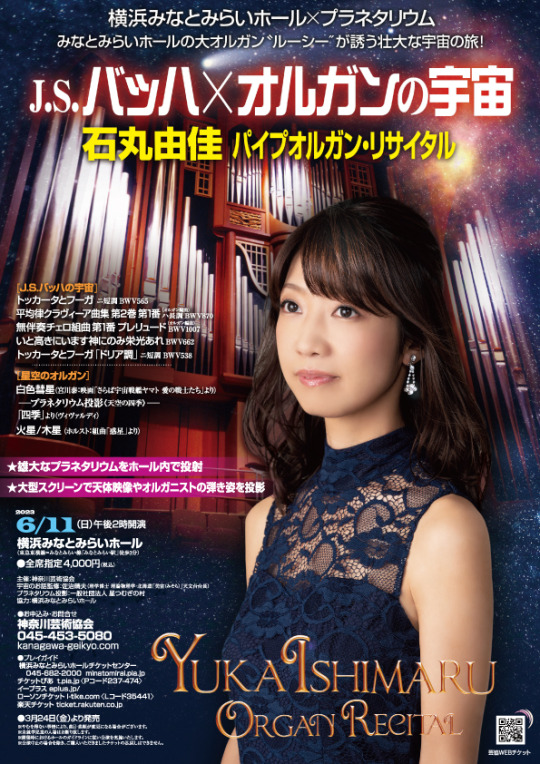
『石丸由佳 パイプオルガン・リサイタル ~J.S.バッハ×オルガンの宇宙~』
日時:2023年06月11日(日) 2:00 pm 開演 会場:横浜みなとみらいホール 出演��パイプオルガン:石丸由佳 曲目・演目 [J.S.バッハの宇宙] トッカータとフーガ ニ短調 BWV 565 平均律クラヴィーア曲集2巻1番 ハ長調 BWV870 無伴奏チェロ組曲第1番 プレリュード BWV1007 いと高きにいます神にのみ栄光あれ BWV662 トッカータとフーガ ニ短調 BWV 538 「ドリア調」他 詳しくはこちら 石丸由佳 オフィシャルサイト
【楽曲リスト】
2015/7/12 放送分 『プレリュードとフーガ 変ロ短調 平均律クラヴィーア曲集 第1巻より第22番 BWV 867 』 作曲:バッハ 編曲:レーガー 演奏:石丸由佳 (オルガニスト) 『オルガンソナタ 第4番 変ロ長調 Op.65 第1楽章』 作曲:メンデルスゾーン 演奏:石丸由佳 (オルガニスト) 2015/7/19 放送分 『leap of faith/今井麻美』 作詞:今井麻美 作曲:宮藤優矢 編曲:濱田智之 『ソナタ 第8番 ホ短調 Op.132 第3楽章 スケルツォーソ』 作曲:ラインベルガー 演奏:石丸由佳 (オルガン) 『バッハのカンタータ《泣き、嘆き、憂い、おののき》とロ短調ミサ曲〈十字架につけられ〉の通奏低音による変奏曲』 作曲:バッハ 編曲:リスト 演奏:石丸由佳 (オルガン) 音源提供:石丸由佳 番組テーマ曲:「フィガロの結婚 序曲」 (音源提供:ナクソス)
過去放送一覧はこちら <ブルーレディオTOPに戻る>
0 notes
Audio
Toccata and Fugue In D Minor, BWV 538 "Dorian" - I. Toccata
First Publication : 1845 or earlier – Leipzig: Edition Peters
By Composer Johann Sebastian Bach
Helmut Walcha, Organist (1907-1991)
#toccata#dorian#bwv 538#j.s. bach#johann sebastian bach#german composers#baroque period#baroque music#organ works#audio#audio post
83 notes
·
View notes
Text
the secret downside of being super into phantom of the opera type minor key organ music is that theres so many pieces i want played at my wedding but they would make the event sound like a fucking funeral like a requiem mass
#vic.txt#i donot want to get married in a church but i want a pipeorgan there but theres nowhere besides churches that have pipeorgans built in AAHH#bwv 538 toccata and fugue in d minor dorian is so fucking sexy but it sounds like a funeral dirge that is mourning music
6 notes
·
View notes
Text
Anonymous asked: I always think of you as Kristin Scott Thomas’ character Fiona in Four Weddings and a Funeral as a beautiful woman who is scarily clever and classy. So with my upcoming wedding (next year!) and especially wedding music I thought of you. I really would appreciate your advice on Mendelssohn or Wagner as they seem to be the traditional choices of music to play at a traditional church wedding. My fiancé isn’t bothered what music we play but I can’t decide. Please do help as I value your unvarnished truth.
Thank you for the flattering words which while well intentioned are nevertheless entirely misplaced.

Swiftly moving on, a sincere congratulations on your forthcoming wedding. I can only imagine how stressful it must be running around like a headless chicken trying to desperately organise everything. And desperate you certainly must be - perhaps even certifiably insane - if you’re turning to me on Tumblr for advice!
I’m not married....yet ( oops! better get that caveat in before I am chastised by those who really know me) but I am a wedding veteran - some would even say, a jaded one (thank you, mummy).

Every season there is a string of wedding invitations that I can’t turn down and I feel obligated to attend. While great fun, one wedding starts to blur into another especially when the champagne starts to copiously flow. I have my own thoughts on the good, the bad, and the tacky about wedding etiquette but I don’t want to disappear down that rabbit hole. Instead let’s talk about Mendelssohn and Wagner.
Both music pieces have traditionally struck a chord (pardon the pun) and have become a staple of traditional weddings since time immemorial.
Mendelssohn's ‘Wedding March’ was originally composed in 1842. He got there first.
youtube
Wagner's ‘Bridal Chorus’ came later in 1848. The ‘Bridal Chorus’ became a popularised piece to play at weddings around Europe after it was most memorably used as the processional at the wedding of Victoria, the Princess Royal to Prince Frederick William of Prussia in 1858. Nowadays - certainly in Britain and the US - it is generally known as "Here Comes the Bride”.
youtube
I suppose the straight forward answer is that it doesn’t have to be Wagner vs. Mendelssohn. Why not both? Wagner’s ‘Bridal Chorus’ can be used for the entrance processional of the bride walking down the aisle and the Mendelssohn ‘Wedding March’ for the recessional walk out of the church.
But you did say you wanted my ‘unvarnished truth’ so allow me the small luxury of an arm chair rant from the Coronavirus self-isolation of my Paris apartment.
Of the two I would definitely ditch the Wagner piece. Please don’t misunderstood me. I am a huge fan of Wagner’s music - like any true Wagnerian I have taken more than one pilgrimage to Beyreuth - but in this case playing Wagner’s music would show a frightful ignorance of the meaning behind the ‘Bridal Chorus’ piece.
I don’t know why more people haven’t picked up on this but I’ve always found it a terribly odd piece to play at a wedding especially as it originates from Wagner’s masterful opera, Lohengrin.
Wagner came upon the opera's inspiration around 1845 when he took interest in the legend of the Holy Grail through the poems of Wolfram von Eschenbach and the anonymous epic of Lohengrin. Composed by 1848, Lohengrin features "Bridal Chorus" as the prelude to a very short-lived, doomed marriage between Elsa and Lohengrin.
The famous ‘Bridal Chorus’ is lustily sung by women of the bridal party serenading Elsa to the bridal suite after the wedding in Act III. Elsa is not allowed to know her true knight’s true name and identity. But this is a romantic German opera and so of course Lohengrin is found out with dire consequences for all. A sad Lohengrin ends up revealing that he is in fact a knight of the Grail and son of King Parsifal, sent to protect an unjustly accused woman. The laws of the Holy Grail say that Knights of the Grail must remain anonymous. If their identity is revealed, they must return home. Lohengrin is lead back to the castle of the Holy Grail. Elsa is grief stricken at being left behind. Poor Elsa (naturally) collapses and dies with a broken heart.
Charming.
To say it’s not the happiest of allusions of looking forward to a long life of wedded bliss would be an understatement.
However my objections against Wagner’s ‘Bridal Chorus’ goes beyond this. For one thing I find it rather too sombre - Oh dear God! Is marriage really like this?!
My main ire is that it overly used and therefore boring to listen to. And when one is bored the mind wanders.
In my case, without sounding malicious, my mind just drifts to whispering mischievous lyrics under my breath that go like, “here comes the bride, big fat and wide, here comes the groom, skinny as a broom.” Try as I might I can never get those words out of my silly mind whenever I hear the organ music playing “Here come’s the bride.” Not my finest hour.
Now Mendelssohn’s ‘Wedding March’ is different beast entirely. Beast being the operative word as we are dealing with Pagan deities.
Typically used in church wedding recessionals, the ‘Wedding March’ piece has sparked controversy due to its literary origins. The Prussian monarch Friedrich Wilhelm IV commissioned Mendelssohn to compose incidental music for many pieces that were based upon Greek mythology and tragedy in order to revive the genre of literature and performance. Among his commissions, in 1843 Mendelssohn composed a setting for William Shakespeare's A Midsummer Night's Dream; the setting comprises twelve musical numbers and a finale. The plot of Shakespeare's play focuses on a pagan god and goddess and is filled with fairies, magic, and fantasy. Due to the piece's pagan, fantastic inspirations, some puritanical leaders and musicians - particularly in Roman Catholic churches - have found the piece to be inappropriate for a Christian religious ceremony. In its defence at least Shakespeare’s A Midsummer Night's Dream was a comedy with a happy ending.
If you’re feeling traditional rather than puritanical then the joyous Mendelssohn ‘Wedding March’ might still be a great option either as a processional or recessional.
If you’re looking for options outside of either Wagner and Mendelssohn then it’s really a matter of exercising good taste alongside what suits the personal tone of your wedding.
Off the top of my head I keep coming back to Johann Sebastian Bach.
Bach’s many cantatas and fugues seem to tick all the boxes. In particular there is Jesu, Joy of Man's Desiring (derived from the cantata Herz und Mund und Tat und Leben, "Heart and Mouth and Deed and Life”). There is also the Toccata and Fugue in D minor ‘Dorian’ BWV 538 and the Toccata and Fugue in F Major, BWV 540. Arioso in A flat for solo piano from Cantata No. 156 "Ich steh`mit einem Fuss im Grabe is softly elegant. A particular favourite piece of mine is Weichet nur, betrübte Schatten, BWV 202, the ‘Wedding Cantata’. Of course many would point out that Bach’s Ave Maria would be perfect for a processional but I would think twice about that. As beautiful as the piece is it is about the Virgin Mary after all and you may invite unwanted speculation from your guests if you are (cough) chaste.
Trumpet Tune in D by Jeremiah Clarke is a little more festive. Or consider his more famous Trumpet Voluntary ‘The Prince of Denmark's March’.
Charles-Marie Widor was a fine composer and his Toccata (from Symphony for Organ No. 5) is spiritually intense for traditional organ music.
Eugène Gigout's famous Grand Chœur Dialogué might appeal to you as well.
G.F. Handel’s Water Music Suite - Air has a graceful and calming tone. The Arrival of The Queen of Sheba (Solomon) HWV 67 is upbeat and was made for a processional.
Beethoven’s Für Elise is perfect to calm last minute panic attacks before you go up the aisle.
And how can one forget Wolfgang Amadeus Mozart?
The Serenade No. 13 for strings in G major, K. 525 or more commonly known as Eine kleine Nachtmusik KV. 525 - II. Romanze: Andante is a beautiful melody familiar to many and sets a soothing tone. Ave verum corpus, K.618 is profoundly spiritual and lifts your hearts up to the angels. ‘Alleluia’ from ‘Exsultate, jubilate’ is wonderful if you can get your hands on a competent soprano. If you are feeling more adventurous then the Spanish Wedding March from The Marriage of Figaro which might be to your taste.
Elgar’s Salut d'Amour, Op. 12 is soft, inviting and makes one feel you’re in some 19th Century romance novel set at court.
Elgar finished the piece in July 1888, when he was romantically involved with Caroline Alice Roberts, and he called it Liebesgruss ('Love's Greeting') because of Miss Roberts' fluency in German. When he returned home to London on 22 September from a holiday at the house of his friend Dr. Charles Buck, in Settle, he presented it to her as an engagement present. The dedication was in French: à Carice. 'Carice' was a combination of his wife's names Caroline Alice, and was the name to be given to their daughter born two years later.
Edvard Grieg’s Wedding Day at Troldhauen, Op. 65, no. 6 is magnificently playful.
Jean-Joseph Mouret’s Rondeau from Sinfonie de Fanfares is a beautiful Baroque piece. What’s a wedding without trumpets that could be heard all the way into the heavens?
Gluck’s Dance of the Blessed Spirits from his Orfeo et Euridice can be an elegant choice to do a recessional. Perfect for sensitive souls.
Gabriel Fauré’s Pavane, Op. 50 is sublime. I can never get tired of listening to it. Would make a worthy piece as a processional.
I would also throw into the mix Gaetano Donizetti’s ‘Una furtiva lagrima’ (A furtive tear) is the romanza from Act II of his delightful opera L'elisir d'amore.
It is sung by Nemorino (a tenor) when it appears that the love potion he bought to win the heart of his dream lady, Adina, works. Nemorino is in love with Adina, but she is not interested in a relationship with an innocent, rustic man. To win her heart, Nemorino buys a love potion with all the money he has in his pocket. That love potion is actually a cheap red wine sold by a traveling quack doctor, but when he sees Adina weeping, he knows that she has fallen in love with him, and he is sure that the "elixir" has worked. It may not fit your idea of a processional but I would try and use it some where in your wedding - perhaps at the reception.
I feel guilty about trashing on Wagner and Mendelssohn so I will leave you with two final thoughts. Reconsider Wagner’s opera Lohengrin. Forget the Bridal Chorus but instead listen to the chorus ‘Gesegnet soll sie schreiten’ in Act II. The various horns give this chorus a dreamlike quality and you feel like you are floating on air. Mendelssohn’s On Wings of Song is a powerful and poignant piano piece and quite suitable to play as your guests away your arrival in church.
I am sure there are other great classical music pieces that I have neglected to mention but others reading this might give their thoughts in the comments below.
If knowledge is knowing a tomato is a fruit, then wisdom is not putting it in a fruit salad. So give careful and considered thought to what music you throw together into the mix as your church wedding processional and recessional.
Congratulations again and I hope it’s a special day for both of you and your families and friends.

Thanks for your question.
#question#wedding#music#wedding music#classical#tradition#church wedding#processional#recessional#personal#bio
37 notes
·
View notes
Video
youtube
The great Karl Richter plays Bach’s Fugue from the “Dorian” Toccata and Fugue in D Minor, BWV 538. After the vigorous Toccata, this Fugue sounds as like Cathedral music. Very spiritual and dignified.
2 notes
·
View notes
Text
film blog
Welkom op onze filmblog voor ckv
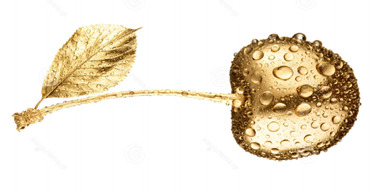
A1.1
Hoe zouden we de aanwijzingen kunnen gebruiken voor het schrijven van het script?
We kunnen de technieken toepassen die in dit filmpje worden verteld om zo ons script te maken.
Noem drie aanwijzingen en hoe je die concreet kan bewerken in je script?
1. Let op de lay-out van je script.
2. Zorg dat je aantal kantjes gelijk is aan het aantal minuten. Dus 5 kantjes is ongeveer 5 minuten.
3. Zorg dat je niet dingen beschrijft die niet worden verteld zoals de gedachten van iemand.
A1.2
schrijf in 50 woorden de beste tip van Andrew Stanton op en zeg hoe je dit in je eigen verhaal kan gebruiken?
Een verhaal kun je het beste in elkaar zetten door er voor te zorgen dat de mensen het verhaal snappen en dat er duidelijkheid in zit. Ook is het erg belangrijk om er voor te zorgen dat je het verhaal van begin tot eind kent om zo een chronologische volgorde te kijken. Wij kunnen deze tip gebruiken door het script goed uit te schrijven en ervoor te zorgen dat als iemand het leest dat hij snapt waar het verhaal over gaat.
A2.1
Hoe zit de lay-out van een script in elkaar? Ga je deze lay-out gebruiken? Waarom wel/waarom niet?
Je begint met de locatie in de lay-out dan wat de personen of objecten doen in de scene. Boven het dialoog de naam wie het doet of zegt. Ja wij gaan deze gebruiken. Want zo maak je het makkelijker wat de persoon moet doen en moet zeggen in de scene.
A2.2
Noem drie dingen waarbij een storyboard je mee kan helpen, die in het filmpje worden genoemd. Noem twee dingen waar je op gaat letten als je dat gaat doen.
Het helpt je de cameraman de positie van de scene goed te nemen. Zodat je een verhaal goed kan vertellen. Storyboard helpt je veel woorden in een camerabeeld te krijgen. Pijlen erbij tekenen zodat je weet of het camerabeeld mee moet bewegen Wij gaan op letten wat eigenlijk onnodig is maar we toch erbij hebben gezet. Wij gaan letten op het niet door de war halen van het story board en dus rustig maken en dus makkelijk beginnen.
A2.4
Hoe heeft de manier waarop de camera werd gebruikt bijgedragen aan een filmische 'look'? Wat zegt dit over wat je moet doen als je wil dat je film eruit ziet als een film en niet als een filmpje dat je zomaar hebt gefilmd? Wat ga je doen om hiervoor te zorgen?
De manier waarop de camera standpunt word gebruikt is erg warm en groot. Omdat je de hele tijd heel de familie ziet dus geeft dat een goed gevoel. De familie is zo gelukkig met elkaar. Dat is te zien uit het filmpje. Zo laten ze het bijna als een echte film aanzien en niet als een filmpje.Je moet er voor zorgen dat je een goed camera punt hebt waar uit je kan filmen. Het moet goed bewerkt zijn. Zorgen dat je alles goed georganiseerd hebt van te voren.
A2.7 Waarom is geluid zo belangrijk bij films? Hoe kun je geluid zo realistisch mogelijk opnemen? Is dit ook handig om te doen voor jullie film? Welke objecten die je hebt kun je gebruiken om interessante geluiden mee op te nemen?
Geluid brengt de spanning in de film daarom is het zo belangrijk. Je kan geluid het beste opnemen in een stille ruimte waar niemand praat. Het moet er ook windstil zijn. Een goede microfoon in ook handig. Het kan misschien wel handig zijn voor onze film. Bijv. een schoon die op de grond valt als een schot van een pistool.
A2.9 Noem drie tips die jou het meest bruikbaar lijken. Kun je deze drie tips goed inzetten bij het maken van je eigen film? Hoe ben je dat van plan?
Je moet genoeg ligt hebben als je met je telefoon filmt. Stille handen hebben want je telefoon reageert snel op kleine bewegingen. Gesprekken opnemen met je telefoon moet je de telefoon dicht bij je mond houden want anders blokt de telefoon het geluid. Ja we kunnen deze tips gebruiken. Wij gaan deze tips gebruiken door gesprekken op te nemen in een stillen ruimte zonder wind. Heel rustig te filmen waar door het beeld niet gaat schudden. Goed opletten op het licht inval punt.
A3. The Immigrant (1917)
Welke filmtechniek valt op?
Hoe wordt die filmtechniek gebruikt?
Hoe ondersteunt het filmische (de camerabeweging, de montage, belichting, kleur etc.) het verhaal?
Wat haal je hier uit voor je eigen film?
Het geluid valt erg op. Omdat in charli chaplin films het geluid met het beeld het verhaal verteld. Er zit ook alleen maar muziek in de film. Er zijn eigenlijk geen camerabewegingen. De camera staat gewoon stil en dus zijn er geen camerabewegingen. Je ziet dat het een film uit 1917 is want hij is in zwart wit en dus is er weinig aan de montage gedaan. Er is ook weinig behoeften aan licht in de film want hij is in zwart wit. Bij meer belichting maakt het licht het beeld alleen maar meer wit/lichtgrijs. Wij willen ook zo weinig mogelijk spraak in onze film. Dus dan willen we ook dat het beeld en het geluid/muziek het verhaal verteld voor ons.
A3. If (2014)
Welke filmtechniek valt op?
Hoe wordt die filmtechniek gebruikt?
Hoe ondersteunt het filmische (de camerabeweging, de montage, belichting, kleur etc.) het verhaal?
Wat haal je hier uit voor je eigen film?
De cuts en overgangen vallen op. Vooral als ze in bed liggen. Toen veranderde hele tijd als de man praten naar een ander camera punt en ook anders om. De camera bewegingen, er zit steeds een kleine draai aan als ze een flasforward krijgen naar de trouwerij. Er is niet heel veel aan gemonteerd denken wij omdat het heel natuurlijk is. Net zoals het licht is erg natuurlijk als ze in bed liggen is namelijk alleen de zijkant van het hoofd belicht. De kleur is was warmer als ze een flashfoward krijgen naar de trouwerij. Dan is het ook iets meer oranje. Wij gaan de camera bewegingen hieruit proberen te gebruiken en het natuurlijke licht willen we zoveel mogelijk gebruiken.
A3. thirller (1984)
Welke filmtechniek valt op?
Hoe wordt die filmtechniek gebruikt?
Hoe ondersteunt het filmische (de camerabeweging, de montage, belichting, kleur etc.) het verhaal?
Wat haal je hier uit voor je eigen film?
Wat erg opvalt aan deze video is dat er veel gebruik word gemaakt van de locatie en het licht. Zo filmen het bijvoorbeeld in het donker om ervoor te laten zorgen dat de video spannend wordt om naar te kijken. De filmtechniek is dat ze veel van andere oogpunten kijken met de camera. Zo veranderen ze de hele tijd welke personen ze film of van welke hoek om zo ruimte en diepte te geven. Doordat ze deze bewegingen toepassen en gebruik maken van het donker licht zorgt het ervoor dat het ook echt net lijkt of je naar een thriller film aan het kijken bent. Wij kunnen door deze tips bijvoorbeeld meer spanning in onze film opwekken en meer diepte geven in de film.
A4. move (2011)
Welke filmtechniek valt op?
Hoe wordt die filmtechniek gebruikt?
Hoe ondersteunt het filmische (de camerabeweging, de montage, belichting, kleur etc.) het verhaal?
Wat haal je hier uit voor je eigen film?
Wat erg opvalt aan deze video is dat er veel overgang is naar een ander beeld. Zo veranderen ze bijvoorbeeld de hele tijd van plaats. De filmtechniek die gebruikt word is gebruik maken van de diepte van de plaats en van het licht wat er is. De montage steunt het verhaal omdat je zo kan zien wat je allemaal met montage kan doen omdat het nu een soort van compilatie is van plekken waar die allemaal is geweest. Dit kunnen wij in onze film gebruiken door de hele tijd van locatie te wisselen.
B2

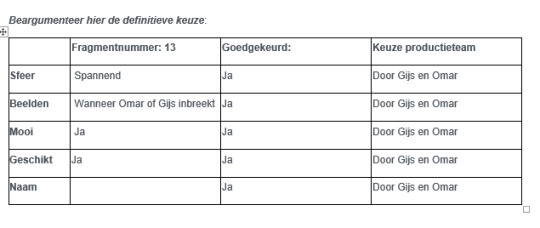
B4


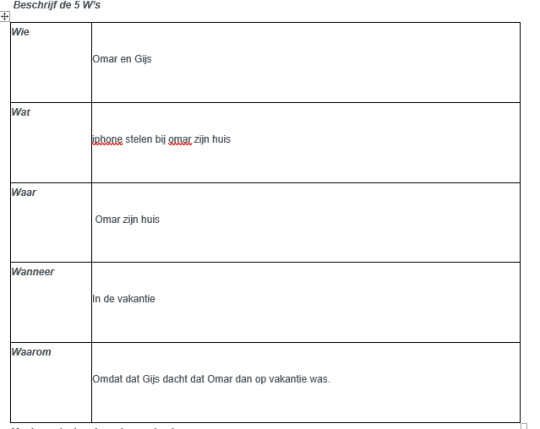

B3
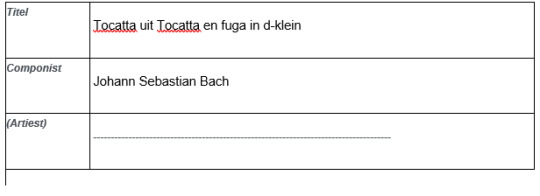
Wanneer de compositie is ontstaan is onduidelijk, aangezien het werk slechts in één 18de-eeuws en in zeven vroeg-19de-eeuwse kopiehandschriften is overgeleverd. Lange tijd werd aangenomen dat het door Bach gecomponeerd werd in de tijd dat hij werkzaam was als hoforganist en hofkamermusicus (later: hofconcertmeester) in weimar (periode 1708-1717). Tegenwoordig wordt het tijdvak 1700-1702 - in Bachs gymnasiumtijd in Lüneburg waar hij studeerde bij de organist-componist georg böhm- aangemerkt als ontstaansperiode van het representatieve, virtuoze orgelstuk. Bach had in de periode 1703-1707 - dus vanaf zijn 18de - zijn eerste beroepsbetrekking van organist van de Neue Kirche in Arnstadt. Waarschijnlijk vertolkte Bach dit muziekstuk in 1703 bij wijze van klinkende 'sollicitatie' naar de functie van kerkorganist.Aangezien Bach in de zomer van 1702 te Sangershausen in Sachsen-Anhalt op blijkbaar overrompelende wijze een 'sollicitatiewedstrijd' had gewonnen voor de vacante positie van kerkorganist van de monumentale St.Jacobikirche - door ingrijpen van de plaatselijke regerend vorst werd echter diens favoriet in deze functie benoemd - is de aanname relevant dat hij bij die gelegenheid zijn representatieve Toccata Con Fuga heeft vertolkt.De Toccata Con Fuga: Pedaliter (titelaanduiding in het oudste kopiehandschrift) vertoont alle kenmerken van een jeugdig bravourestuk. Het hoort qua vorm - driedelig - thuis in de categorie van het Noord-Duitse, 17de-eeuwse, meerdelige 'Praeludium-pedaliter' en qua stijl in dat van de 'Stylus phantasticus' (vrije fantastische stijl).
Het woord tocatta' (een afleiding van het Italiaanse toccare dat 'aanraken' betekent) duidt op een compositie voor vingerspel met een sterk virtuoze inslag. Dat is Bachs eerste bijdrage aan dit genre zeer zeker. De nadrukkelijke aanduiding 'Pedaliter' in de titel van de compositie geeft aan dat eenzelfde speelkwaliteit verlangd wordt wat betreft het bespelen van het voetklavier, het pedaal. (afkomstig van het Latijnse woord pedes, dat voeten betekent).In een latere orgeltoccata van zijn hand (uit de bovengenoemde periode-Weimar), de tweedelige Toccata et Fuga in F (BWV 540), blijkt de componist afscheid te hebben genomen van het Noord-Duitse meerdelige vormmodel (3- of 5-delig) 'praeludium-pedaliter' en van de grillig-vrije fantastische stijl van weleer. Dit geldt evenzeer voor de latere Dorische toccata in d (BWV 538) die op het model van het Italiaanse solo-concerto blijkt geschoeid. In de driedelige Toccata, Adagio et Fuga in C (BWV 564) blijkt het apart van elkaar geconcipieerde driedelige Italiaanse concerto-model (snel-langzaam-snel) nog sterker aanwezig, met uitzondering van de openingssectie van de Toccata die een virtuoze solo voor het pedaal behelst.Bijzonder is echter dat vrijwel alle klavecimbeltoccata's van Bach in de Stylus Phantasticus staan geschreven. Deze composities dateren waarschijnlijk uit Weimar toen Bach zijn 'Noord-Duitse leerfase' allang achter de rug had en de wereld van de eigentijdse Italiaanse muziek (die van Vivaldi voorop) zich in zijn denk-, schrijf- en musiceerwijze nestelde.Deze paradox is verklaarbaar uit het feit dat het orgel van de Weimarer hofkapel (gebruikt tijdens kerkdiensten en concertbespelingen) wegens reparatie en uitbreiding een tijd lang onbespeelbaar was. Mogelijk kreeg Bach van zijn adellijke broodheren - Weimar had toentertijd twee regerende hertogen, een oom (in het grote stadspaleis) en een neef (in het kleinere 'Rote Schloss') - ook de opdracht om in kleiner verband, in salons van met name het 'Rote Schloss' (net buiten het grote stadskasteel gelegen), op de voor hem 'normale' c.q. favoriete manier te musiceren, in de meerdelige Noord-Duitse vorm en volgens de vrije fantastische stijl. Door uitlatingen van Carl Philipp Emanuel Bach is bekend dat Bach, met name als solerend/improviserend musicus op het orgel en op het klavemcibel zich ook doelbewust in verschillende stijlvormen kon uitdrukken: zowel in die van het muzikale voorgeslacht als van tijdgenoten (generatiegenoten en nieuwe lichtingen). Dit kon ook in zijn eigen composities doorwerken, zoals uit onder meer het bovenstaande blijkt.
B1
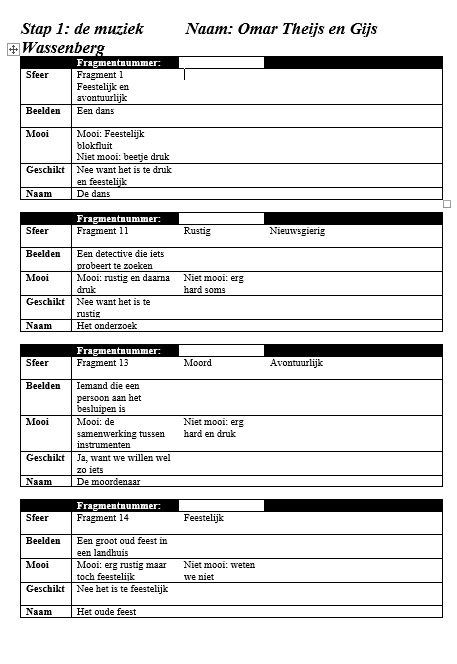
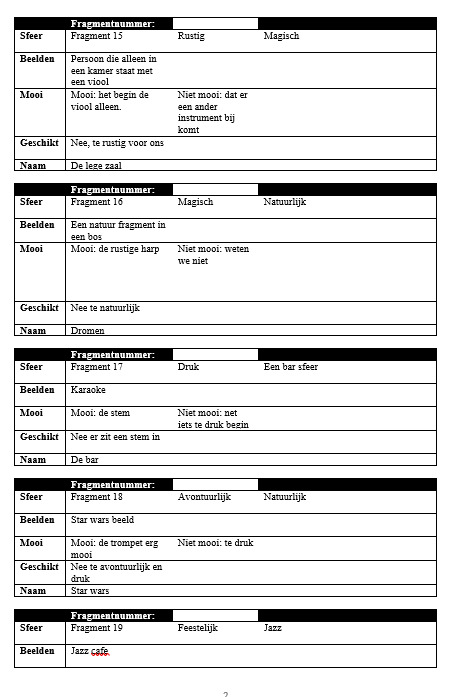

draaiboek
per scène hebben we voldoende licht nodig om ervoor te zorgen dat alles duidelijk op beeld is. Het camera standpunt verschilt elke keer per scène, als we gaan filmen kunnen we per scène vertellen over het camera standpunt. Om ervoor te zorgen dat de film niet te makkelijk is om te voorspellen zorgen we ervoor dat we de hele tijd met de camera draaien. Zo maken we shots van dichtbij en ook van veraf.
bepaalde artikelen die we nodig hebben zijn: telefoon, hesje, geweer en computer.
waar gaan we de beelden opnemen: de beelden worden opgenomen op school, buiten en in Omar huis.
Script:
Gijs: jo omar
Omar: jo gijs hoe gaat ie
Gijs: prima met jou
Omar: ja goed
Gijs: ben je nou de nieuwe iphone 11 aan het bestellen
Omar: ja man de vorige was kapot. Dus moet ik een nieuwe bestellen.
Omar: is wel duur
Gijs: jo omar hoe is die
Omar: ja ga goed. Nieuwe telefoon net binnen.
Gijs: ahh laat is zien
Omar: kijk, kei vet gast
Gijs: die zou ik eigenlijk ook wel willen hebben
Omar: wel?
Gijs: ja is wel vette telefoon.
Omar: ja ik ben net uit dus ik ga wel naar huis
Gijs: oh, ik ga hier ff huiswerk maken.
Omar: jo is goed maat.
Gijs: jo later hé
Omar: later
Gijs: blijf daar daar blijven blijf daar
Omar: eyyy ik doe niks rustig aan rustig aan
https://wetransfer.com/downloads/04ca32ea53ce0ca0972ad7bdd2b0d62120191118201211/72a833c0b2c9b119180d6111c6cfc2e620191118201211/1ec1fd
1 note
·
View note
Audio
2 notes
·
View notes
Video
youtube
Johann Sebastian Bach: Toccata en Fuga in d BWV 538 (Dorian)
Amazing!!!
8 notes
·
View notes
Text
KEI KOITO

BACK TO BACH: FAMOUS ORGAN WORKS
La organista japonesa Kei Koito, especializada en música barroca y renacentista, ha grabado un álbum en el que interpreta algunas de las piezas para órgano más conocidas de Johann Sebastian Bach junto a otras menos conocidas y con gran dificultad en su ejecución. Back to Bach es publicado por Deutsche Harmonia Mundi. A la venta el 20 de septiembre.
El disco ahonda en la trayectoria del gran compositor alemán como compositor de obras para este instrumento, tanto en los géneros tradicionales alemanes (Preludios, Fantasías y Tocatas) como en las formas más estrictas (Preludios para Coros y Fugas).
La lista de piezas del disco incluye piezas como Tocata y Fuga en re menor (BWV 538), Fantasía en “Jesu, Joy of Man's Desiring” o Fantasía en “Eine feste Burg ist unser Gott”. El álbum fue grabado en la famosa St Martini Kerk de Groningen (Países Bajos).
El órgano histórico utilizado fue ampliado en 1691-2 por Arp Schnitger (1648-1719), un constructor de órganos muy influyente del norte de Alemania.
Kei Koito ha disfrutado de una aclamada carrera como organista de conciertos. Ha actuado en toda Europa, Rusia, Japón y América y es famosa por su experiencia en música barroca y renacentista. Ha grabado diversos discos y ha recibido diversos premios internacionales, entre los que se encuentra el Diapason D’Or. Sus grabaciones han tenido una cálida acogida por parte de público y crítica. Su último disco hasta ahora, Splendour(2017), recogía piezas de órgano de compositores del norte de Alemania.
CONTENIDO
J.S. Bach (1685-1750)
Toccata & Fugue in d (Dorian), BWV 538
1. Toccata
2. Fugue
3. An Wasserflüssen Babylon, BWV 653
4. Trio in G « Was Gott tut, das ist wohlgetan », from BWV 75 / BWV Deest
Prelude & Fugue in g, BWV 535
5. Prelude
6. Fugue
7. Nun danket alle Gott, BWV 657
Prelude & Fugue in G, BWV 550
8. Prelude
9. Fugue
10. Prelude/Passagio in g, BWV 535a/1
11. Trio in g « Ich will an den Himmel denken », BWV 584
after Cantata 166/2 « Wo gehest du hin ? »
12. Komm, Gott, Schöpfer, Heiliger Geist, BWV 667
13. Fantasia super « Jesu, meine Freude », BWV 713a/1 & 713/2
14. O Lamm Gottes, unschuldig, BWV 656
15. Herzlich tut mich verlangen, BWV 727
16. Fantasia super « Ein fest Burg ist unser Gott », BWV 720
Prelude/Pièce d’Orgue & Fugue in D, BWV 532
17. Prelude/Pièce d’Orgue
18. Fugue
0 notes
Text
youtube
0 notes
Audio
1 note
·
View note
Video
youtube
Arash Safaian, Sebastian Knauer, Pascal Schumacher, Zürcher Kammerorchester: Concerto No. 5, "Dorian": II. Toccata After Organ Toccata in D Minor "Dorian", BWV 538
0 notes
Text
tagged by @castlevaniariaofsorrow 2 share 5 of my favorite songs WHEEEEEEEEEEEEEEEEEEEEEEE no particular odrder
⬡ head over heels - abba ⬡ spageti pababa - sexbomb girls ⬡ under pressure - queen ⬡ it doesnt matter - five finger death punch ⬡ fugue in d minor bwv 538 "dorian" - js bach
tagging @m4rcv5 @devourerofjourneys @mutillidae @rolypolyropalolyst @temptationstairway and whoever else wants 2 do it just say i tagged u ^_^
#it doesnt matter has the best opening out of all of these its just ONE TWO THREE FUCK YOUUUUU!!!!!!!!!! FUCK YOUUUUU!!!!!!!!!!!!!!!!!!!!!!!#vic.txt#none of these songs have anything in common
4 notes
·
View notes
Video
youtube
Bach - Toccata and fugue in D minor BWV 538 - Van Doeselaar | Netherland...
0 notes
Text
0 notes